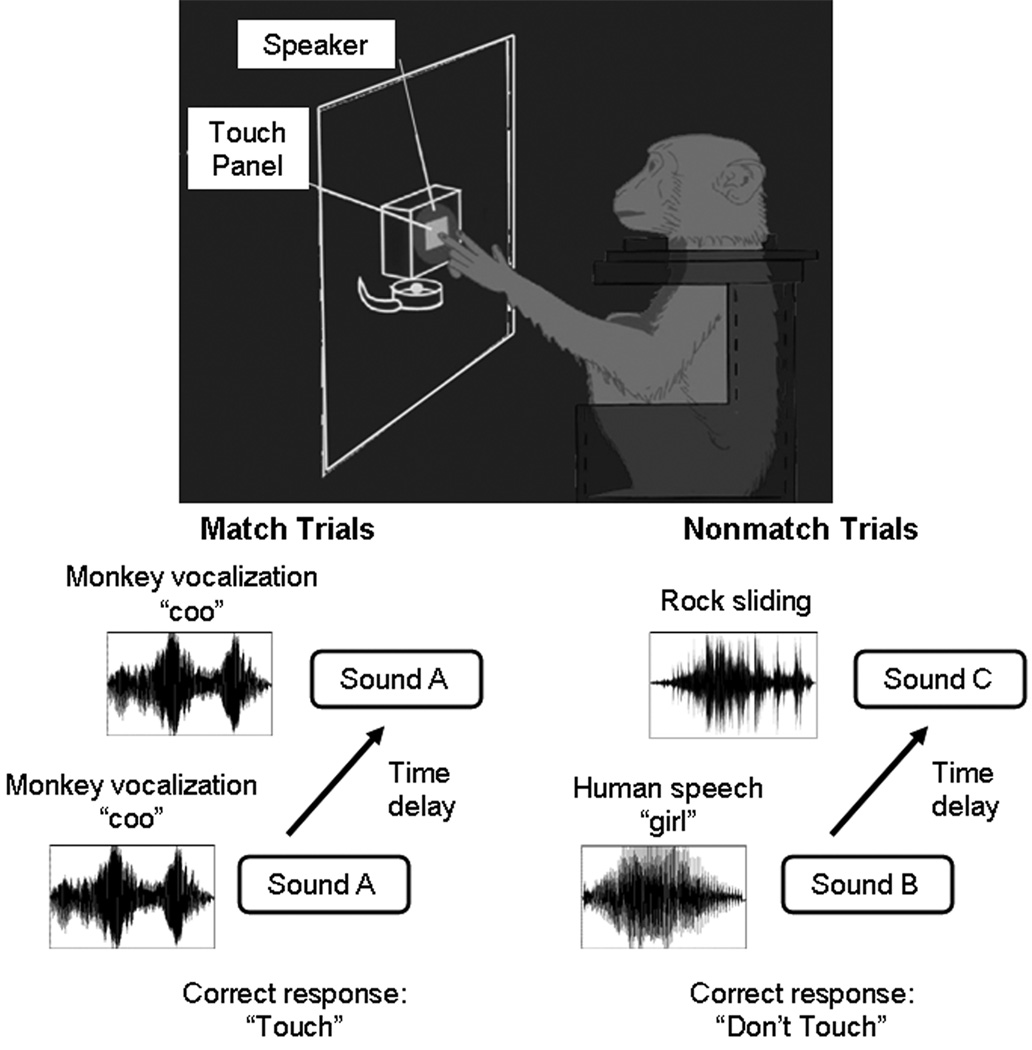Figure 1.
Schematic diagram depicting the auditory delayed matching-to-sample task. Daily sessions contain equal numbers of match and nonmatch trials. During match trials, the first sound, followed by a 5-second delay, was same as the second sound. The correct response was a touch (go-response) and the animal was then rewarded. During nonmatch trials the two sounds were different and also separated by a 5-second delay, and the correct response was to not touch. The correct no-go response was not rewarded, and thus the study utilized asymmetric reinforcement contingency. An erroneous touch response during nonmatch trials resulted in an extended inter-trial interval before the next trial started.

